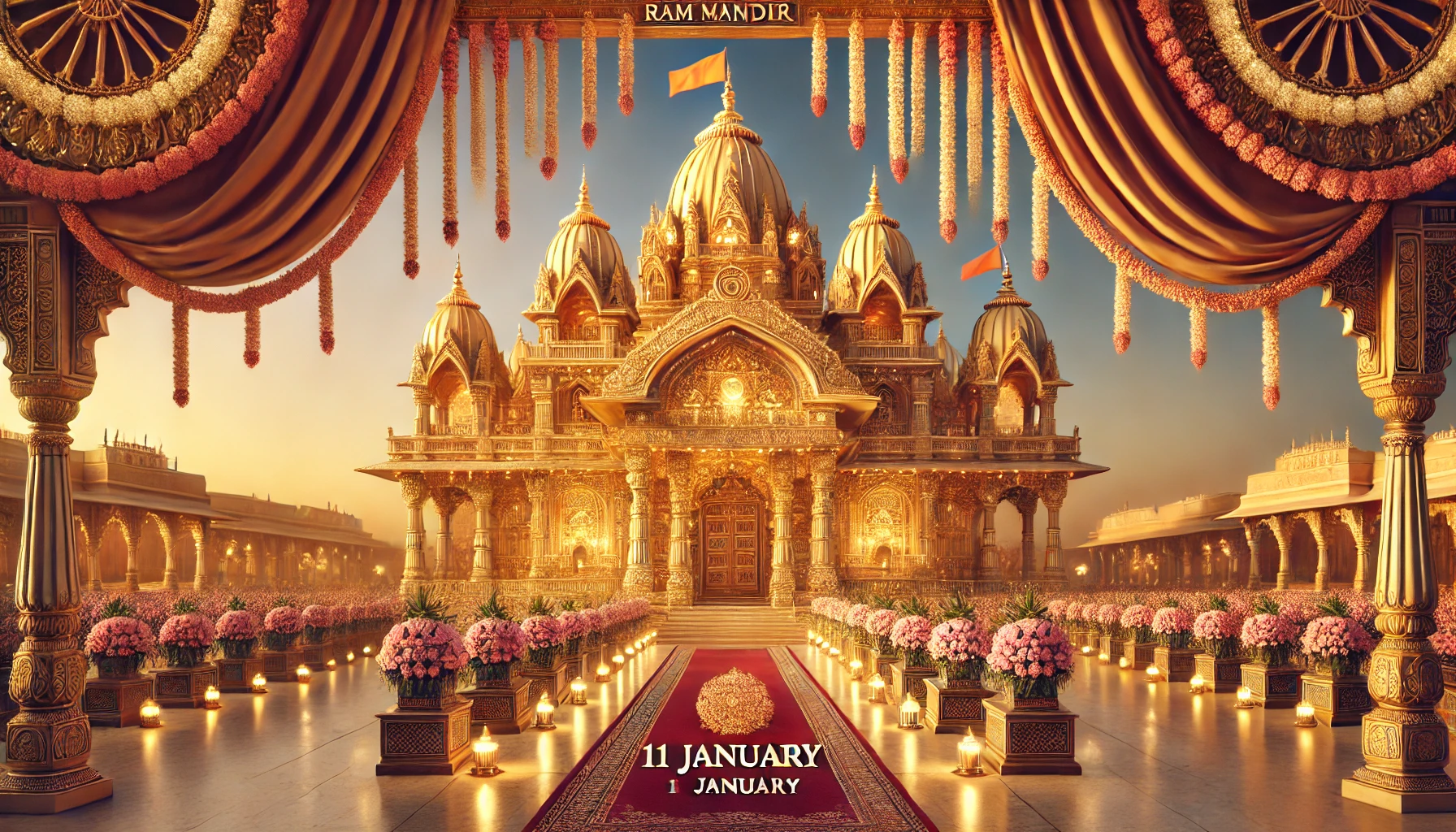Introduction
The Ram Mandir in Ayodhya stands as a beacon of faith, unity, and cultural heritage for millions around the world. Located on the sacred site believed to be the birthplace of Lord Ram, this grand temple is not just a structure but a testament to centuries of devotion, resilience, and hope. As the temple nears its much-anticipated inauguration anniversary, let us delve into its fascinating history, the journey of its construction, and the cultural significance it holds.
Historical Background
The story of the Ram Mandir is deeply intertwined with the cultural and spiritual history of India. According to ancient texts and epics like the Ramayana, Ayodhya was the capital of the Kosala Kingdom and the birthplace of Lord Ram, the seventh incarnation of Lord Vishnu.
The site gained prominence in Indian history over centuries, with mentions in texts, folklore, and oral traditions. However, it also became a focal point of contention in the modern era due to historical events:
- Medieval Era: In the 16th century, a mosque known as the Babri Masjid was constructed at the site by the Mughal emperor Babur. Historical accounts suggest this led to debates and clashes over the land’s religious significance.
- Colonial Period: During British rule, the site continued to be a contested space, with Hindu and Muslim communities claiming ownership.
- Post-Independence: After India gained independence in 1947, the Ayodhya dispute intensified. The placement of idols in the mosque in 1949 and subsequent legal battles marked significant milestones in the struggle.
- The 1992 Incident: The demolition of the Babri Masjid by a large crowd of kar sevaks led to nationwide communal tensions, bringing the Ayodhya issue to the forefront of national consciousness.
- The Landmark Verdict: After decades of legal proceedings, the Supreme Court of India delivered its historic judgment on November 9, 2019, paving the way for the construction of the Ram Mandir. The court granted the disputed land to a trust for the temple’s construction while allocating alternate land for a mosque.
The Construction of Ram Mandir
The foundation stone of the Ram Mandir was laid on August 5, 2020, by Prime Minister Narendra Modi, marking the beginning of an era of unity and spiritual rejuvenation. The temple’s architecture combines traditional Indian temple design with intricate carvings and advanced engineering techniques. The grandeur of the temple symbolizes not just religious faith but also India’s rich architectural heritage.
Key Features of the Temple:
- Design: The temple follows the Nagara style of architecture, prevalent in Northern India.
- Dimensions: The main structure will rise to a height of 161 feet and will have three stories adorned with 212 intricately carved pillars.
- Materials: The temple is being constructed with pink sandstone from Rajasthan, ensuring durability and aesthetic brilliance.
- Sanctum Sanctorum: The sanctum will house an idol of Lord Ram in his child form, symbolizing his divine presence at his birthplace.
The Significance of Hindu Calendar in Temple Celebrations
The temple trust clarified that Hindu festivals and rituals are traditionally observed based on the Hindu calendar. The Pran Pratishtha ceremony was performed on Paush Shukla Paksha Dwadashi, also known as Kurma Dwadashi. In 2025, this date falls on January 11, prompting the decision to celebrate the anniversary on this day. This alignment with the Hindu calendar ensures the temple’s rituals remain deeply rooted in tradition and cultural authenticity.
Significance of the Anniversary
The inauguration anniversary of the Ram Mandir is not just a date on the calendar but a celebration of faith, cultural identity, and the spirit of resilience. The occasion brings together devotees, historians, and tourists from across the globe to witness the magnificence of this architectural marvel.
- Cultural Unity: The temple’s anniversary serves as a reminder of India’s ability to rise above differences and unite for a common cause.
- Spiritual Awakening: Devotees see the temple as a source of divine inspiration, reinforcing their faith in Lord Ram’s teachings of dharma, truth, and righteousness.
- Tourism and Economy: The temple is expected to boost Ayodhya’s economy by attracting millions of visitors annually, providing opportunities for local businesses and artisans.
Interesting Facts About the Ram Mandir
- The temple’s construction involves over 1,000 skilled artisans and engineers.
- It will feature a Ram Katha Kunj, where episodes from the Ramayana will be depicted through murals and sculptures.
- The Ram Mandir complex will include a museum, library, and research center to educate visitors about Lord Ram’s life and the temple’s history.
- The construction is eco-friendly, utilizing sustainable practices and materials.



